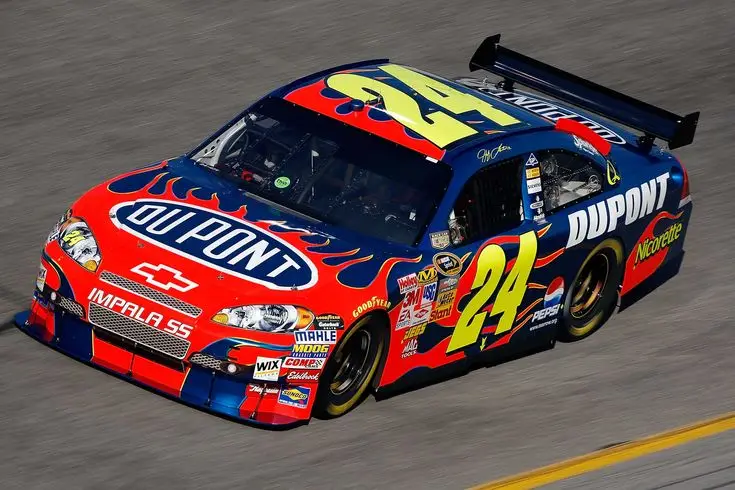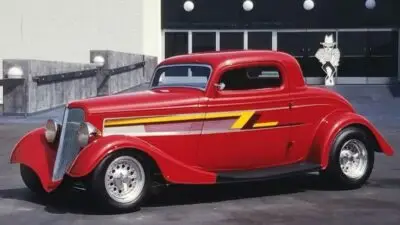Every time you get behind the wheel of your car, you’re experiencing technology that was born on the racetrack. The innovations we take for granted in everyday vehicles—from disc brakes to rearview mirrors—often began as solutions to problems faced by race car drivers pushing machines to their limits. Racing teams have always sought the cutting edge of what’s possible, creating a proving ground where new ideas are tested under extreme conditions before making their way to consumer vehicles.

This transfer of technology from motorsports to production cars has been happening for over a century. Formula 1, NASCAR, and endurance racing have all contributed to making our daily drives safer, more efficient, and more comfortable. The relentless pursuit of victory on the track has led to tremendous advancements in engine technology, aerodynamics, and materials science that benefit ordinary drivers.
Key Takeaways
- Racing competitions have directly influenced modern car safety features like seatbelts, crumple zones, and anti-lock braking systems.
- Performance innovations including fuel injection, turbocharging, and aerodynamic designs first proved their worth on racetracks before reaching consumer vehicles.
- Environmental concerns in motorsports have accelerated the development of efficient engines, hybrid systems, and sustainable fuel technologies for everyday cars.
The Genesis of Modern Motorsports

Modern motorsports began in the late 19th century when automobile manufacturers sought to prove their vehicles’ reliability and performance. These early competitions were simple road races between cities, often on unpaved roads.
The first organized automobile competition took place in 1894 with the Paris-Rouen race. This event marked the beginning of what would evolve into modern motorsports as we know them today.
By the 1920s, dedicated racing circuits started appearing. The Le Mans 24-hour endurance race began in 1923, testing both speed and reliability of vehicles over a grueling day-long competition.
In America, beach racing at Daytona began in 1902, eventually leading to the creation of the Daytona International Speedway in 1959. This iconic track would become central to NASCAR, which formally organized in 1948.
Formula One emerged in 1950 as the premier international racing series. It combined technological innovation with driver skill on purpose-built circuits across the globe.
These early racing competitions were more than entertainment—they served as testing grounds for new technologies that would later appear in everyday vehicles.
Engineers pushed boundaries with each race, developing advancements in engines, aerodynamics, and safety features. Many innovations we take for granted today were first refined under extreme racing conditions.
By the mid-20th century, motorsports had evolved from novelty exhibitions into sophisticated competitions that drove technological progress in the automotive industry.
Technological Innovations Sparked by Racing

Racing has been a powerful incubator for automotive technologies that eventually make their way into everyday vehicles. Motorsports pushes the limits of what’s possible, forcing engineers to develop solutions that improve speed, safety, and reliability under extreme conditions.
From Track to Road: Aerodynamics and Efficiency
The sleek profile of modern cars owes much to racing aerodynamics. Formula One teams spend millions studying airflow to reduce drag and increase downforce. These principles now help everyday cars achieve better fuel economy and stability at highway speeds.
Wind tunnels, once exclusive to racing teams, now test production vehicles for optimal aerodynamic performance. The rear spoilers that appeared on race cars in the 1960s have evolved into subtle design elements on modern sedans.
Racing’s obsession with speed and efficiency has directly influenced how manufacturers design consumer vehicles. Even seemingly simple features like side mirrors and underbody panels have been refined through racing development.
Porsche, with its long racing heritage, regularly transfers aerodynamic lessons from track to street. Their active rear spoilers that deploy at highway speeds originated in motorsports competition.
Chassis and Suspension: The Pursuit of Stability
Modern suspension systems can trace many innovations directly to the racetrack. Active suspension technology, which adjusts to road conditions in real-time, was pioneered in racing before reaching production cars.
The monocoque chassis design, now standard in passenger vehicles, was perfected in Formula One racing. This integrated body-frame construction improves both safety and handling while reducing weight.
Stability control systems that help prevent skids were developed for racing conditions where traction is critical. These computerized aids now save thousands of lives annually on public roads.
Daytona 500 and other endurance races have pushed development of durable suspension components that can withstand extreme stress. This testing has resulted in longer-lasting parts for consumer vehicles.
The Role of Materials: Carbon Fiber Revolution
Carbon fiber represents one of racing’s most significant contributions to automotive technology. This lightweight, incredibly strong material first appeared in Formula One cars in the 1980s.
Today, carbon fiber components are becoming increasingly common in production vehicles. What started as exotic racing technology now appears in hoods, roof panels, and structural elements of mainstream cars.
The material’s exceptional strength-to-weight ratio improves both performance and safety. Carbon fiber’s energy absorption properties make it ideal for crash structures in both race and passenger cars.
Racing teams pioneered manufacturing techniques for carbon composites that have gradually become more cost-effective for mass production. Porsche and other manufacturers now use these materials extensively in their high-performance road cars.
The relentless pursuit of lighter, stronger materials in motorsports continues to drive innovation that eventually benefits everyday drivers through improved efficiency and safety.
Motorsports and the Evolution of Safety

Safety standards in motorsports have transformed dramatically over decades, directly influencing the protective features we now take for granted in everyday vehicles. The development of these technologies stems from hard lessons learned on racetracks around the world.
Integration of Safety Features
Racing has pioneered numerous safety innovations that later became standard in consumer vehicles. The rollover protection system originated in racing before becoming a staple in passenger cars. This structure helps maintain cabin integrity during accidents.
Fire-resistant materials, first developed for racing suits, now appear in everyday clothing and vehicle interiors. These materials can withstand extreme heat, providing precious seconds for escape during emergencies.
The HANS (Head And Neck Support) device, mandatory in professional racing since the early 2000s, prevents basilar skull fractures during high-speed crashes. This technology inspired improved headrest designs in passenger vehicles.
Crash data recorders, now standard in modern cars, were first used extensively in motorsports to analyze accidents and improve safety designs. This racing technology benefits everyday drivers by helping engineers develop better crumple zones and impact protection systems.
Racing Flags: Signals and Their Meaning
Racing flags represent one of the oldest safety systems in motorsports, providing instant visual communication to drivers traveling at high speeds. The checkered flag signals the completion of a race when waved at the finish line – perhaps the most recognized symbol in racing worldwide.
The green flag indicates the start or restart of a race, signaling to drivers that the track is clear for competition. This universal symbol appears in nearly all motorsport disciplines globally.
A red flag demands immediate cessation of racing due to dangerous conditions or serious accidents. Drivers must slow down, avoid overtaking, and follow officials’ instructions – often returning to the pit lane or grid.
Yellow flags warn of hazards ahead, while blue flags signal faster cars approaching. This standardized communication system has evolved into the electronic flagging systems and dashboard alerts seen in modern racing.
Pushing Boundaries: Speed and Performance

Racing has always been about pushing limits. Motorsports created a perfect testing ground for technologies that later found their way into everyday cars.
Formula One teams invest millions in research to gain even the smallest competitive edge. These innovations eventually trickle down to regular vehicles. Lightweight materials, advanced brakes, and improved fuel efficiency all started on the track.
Aerodynamic designs revolutionized racing in the 1970s. Wings, splitters, and diffusers that keep race cars glued to the track now help your family sedan stay stable at highway speeds.
Porsche exemplifies this technology transfer. Their racing innovations often appear in their street cars within a few years. The ceramic brakes developed for endurance racing now provide superior stopping power in many luxury vehicles.
Suspension technology has made remarkable advances through motorsports. These improvements ensure stability and control at high speeds on the track, and safer, more comfortable rides for everyday drivers.
The introduction of turbochargers and superchargers in racing has transformed consumer vehicles. These technologies deliver more power from smaller, more efficient engines.
Today, electric racing series push new boundaries. Battery technology, energy recovery systems, and electric motors developed for competition are making their way into electric vehicles on our roads.
Racing serves as a high-speed laboratory. When engineers solve problems at 200 mph, the solutions often benefit vehicles moving at 55 mph.
Environmental Impact and Sustainability

Motorsport has evolved from a pure performance industry to one that leads environmental innovation. Racing technologies now focus on creating cleaner, more efficient systems that transfer directly to passenger vehicles.
Green Racing: Renewable Fuels and Formula E
The racing world has embraced environmental challenges through innovative solutions. Formula E stands at the forefront of sustainable motorsport, operating as the first fully electric racing series. Since its 2014 debut, it has showcased electric vehicle capabilities while pushing battery technology forward.
Many racing series now utilize renewable fuels derived from non-food biomass, waste materials, and even carbon capture technology. IndyCar employs ethanol blends, while some rally championships use synthetic fuels that produce significantly lower emissions.
These advancements serve as real-world testing grounds for alternatives to fossil fuels. Racing teams collaborate with energy companies to develop biofuels that can be implemented in consumer vehicles, creating a direct pipeline from racetrack to roadway.
The Hybrid Era: Balancing Power and Sustainability
Formula 1’s introduction of hybrid power units in 2014 marked a pivotal shift in racing technology. These sophisticated systems recover energy during braking and from exhaust heat, dramatically improving efficiency without sacrificing performance.
The motorsport industry has become a proving ground for hybrid technologies that now appear in everyday vehicles. Racing hybrid systems developed for extreme conditions have been refined for production cars, improving fuel economy and reducing emissions.
Beyond powertrains, racing teams implement sustainable practices in manufacturing and operations. Carbon fiber recycling, solar-powered facilities, and water conservation efforts demonstrate racing’s commitment to sustainability beyond just the vehicles themselves.
The Fan Experience: Spectating and Engagement

Motorsport fans have evolved from simple spectators to active participants in racing culture through technological innovations and tradition-rich events. The connection between fans and racing creates a unique ecosystem where passion drives both entertainment and technological advancement.
The Role of Iconic Races
Iconic races like the Daytona 500 and Le Mans have transformed spectator experiences dramatically over decades. In the early days, fans relied on trackside radios and printed programs to follow their favorite drivers.
Today, NASCAR and Formula 1 provide immersive digital experiences that connect fans directly to the action. The fan engagement practices have evolved with social media and digital platforms to create deeper connections.
Racing platforms like NASCAR Drive now offer real-time data that shows telemetry, track positions, and driver communications. This technology allows fans to experience races from multiple perspectives simultaneously.
At Daytona, fans benefit from advanced connectivity that enables mobile apps showing live race analytics and alternative camera angles. These tools transform passive viewing into interactive experiences.
Symbolism in Racing: The Podium Tradition
The podium celebration represents racing’s most enduring tradition, dating back to early European motorsports. This ritual marks the culmination of each race with a standardized ceremony that transcends language and culture.
The three-tiered podium design creates a clear visual hierarchy that instantly communicates competitive results. The winner stands elevated at center, with second and third place drivers positioned lower on either side.
The champagne spray tradition began spontaneously at Le Mans in 1967 when Dan Gurney celebrated his victory. This unplanned moment became a permanent fixture in racing culture worldwide.
Modern podium ceremonies incorporate technological elements like digital backdrops and synchronized lighting. Teams now analyze racing data to enhance these celebrations with personalized graphics and statistics.
Despite technological advances, the podium remains fundamentally unchanged, preserving racing’s heritage while embracing innovation.
Advancements in Driver Gear and Interface

Racing drivers interact with their vehicles through increasingly sophisticated equipment. The evolution of these interfaces has transformed not just motorsport but also the technology we use in everyday vehicles.
Steering Wheel Technology
Modern racing steering wheels bear little resemblance to their ancestors. Today’s Formula 1 steering wheels contain up to 35 buttons, switches and paddles that control everything from engine mapping to brake balance adjustments.
These multi-function steering wheels have directly influenced consumer vehicles. Features like paddle shifters, which first appeared in racing, are now common in everyday cars. This technology allows drivers to change gears without removing their hands from the wheel.
Racing teams have also pioneered steering wheel displays. These screens show crucial information like lap times, tire temperatures, and fuel consumption. This innovation has evolved into the digital dashboards and heads-up displays now appearing in consumer vehicles.
Ergonomics has been another key area of advancement. Custom-molded grips designed for racing have improved driver comfort during long races. This research has led to more comfortable and responsive steering systems in regular cars.
Frequently Asked Questions

Racing technology has shaped everyday cars in profound ways. The intense competition and engineering challenges in motorsports have created innovations that make our daily drives safer, more efficient, and more enjoyable.
How has Formula 1 influenced advancements in consumer vehicle technology?
Formula 1 has been a primary source of innovation for everyday vehicles. The development of paddle shifters and push-button ignition systems now common in modern cars originated in F1 racing.
Regenerative braking systems, first tested extensively in F1, have become essential components in hybrid and electric vehicles. These systems capture energy during braking and convert it to electricity.
F1’s focus on telemetry and data collection has also influenced consumer vehicles, with advanced diagnostics and monitoring systems now standard in many cars.
What historical developments in motorsports have significantly impacted modern automotive engineering?
Disc brakes represent one of the most significant safety innovations from racing. First used competitively in the 1950s at Le Mans, they proved far superior to drum brakes and are now standard on virtually all cars.
The development of turbochargers in racing during the 1970s and 1980s led to their widespread adoption in consumer vehicles. This technology allows smaller engines to produce more power while maintaining fuel efficiency.
Rearview mirrors, now a legal requirement, were first used in the 1911 Indianapolis 500 when Ray Harroun needed to see behind his car without a riding mechanic.
To what extent does technology transfer from motorsports to commercial car production?
The transfer of technology from racing to street cars is extensive and deliberate. Many automakers explicitly use racing as a testing ground for technologies they plan to implement in consumer vehicles.
The timeline for technology transfer has shortened significantly. Innovations that once took decades to reach consumer cars now often appear within a few years of being tested in racing environments.
Manufacturers like Ferrari, Mercedes, and McLaren directly apply their racing expertise to their road car divisions, creating direct technology pipelines.
What innovations in safety have originated from professional racing and are now standard in consumer vehicles?
Crumple zones and safety cells were pioneered in racing. These design elements absorb crash energy while protecting occupants, dramatically reducing fatalities in accidents.
The HANS (Head and Neck Support) device led to improved headrest designs in consumer vehicles. These systems reduce whiplash injuries and protect the neck during collisions.
Fireproof materials developed for racing suits have influenced flame-resistant materials in everyday car interiors. This safety technology has saved countless lives in post-crash scenarios.
How has the competition in motorsports driven the evolution of automotive aerodynamics?
Wind tunnel testing became standard practice in Formula 1 before spreading to consumer car development. This has led to dramatic improvements in fuel efficiency and vehicle stability.
Underbody aerodynamics, including diffusers and flat bottoms, originated in racing but now help everyday cars reduce lift and improve stability at highway speeds.
Smaller aerodynamic elements like spoilers and side mirrors have been refined through racing to reduce drag without sacrificing functionality. These subtle changes contribute to better fuel economy in modern vehicles.
In what ways have material sciences advanced due to the demands of high-performance racing?
Carbon fiber, once exclusive to aerospace and racing, is now found in many premium and even mid-range vehicles. This lightweight material increases strength while reducing weight and improving fuel efficiency.
Composite materials developed for racing engines have improved durability in consumer engines. These advanced materials allow engines to run hotter and more efficiently while lasting longer.
Advanced lubricants and fluids tested in extreme racing conditions now extend the life of everyday vehicles. These specialized formulations reduce friction and heat, improving both performance and longevity.



